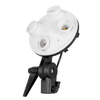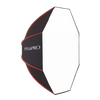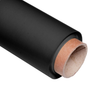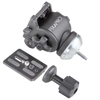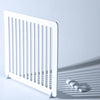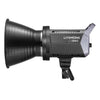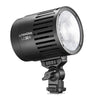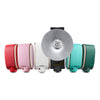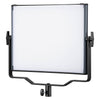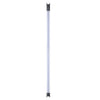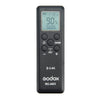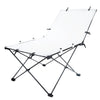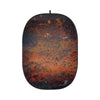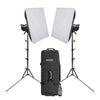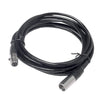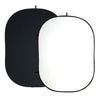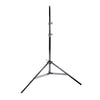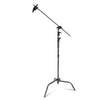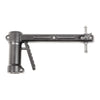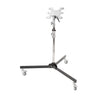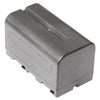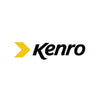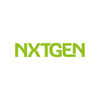LED Panel vs LED Head
When it comes to LED lighting, there are two designs which are the most common on the market. These are the LED Panel light and the LED Head light. Whilst both of these lights are designed to be incredibly useful and powerful, there are a few differences. In this Blog, we will look at these differences and help inform you as to which would best suit you, and we will use our VNIX1500S and LED100D MKIII as guides for this.
 |
 |


VNIX1500S
vs LED100D MKIII
Firstly, we will look at the way the light is created by each of these designs. For the VNIX1500, due to the design having the LED bulbs spread across a larger space, the light itself will therefore cover a much larger area. With it being able to cover a larger area, it also makes the light more difficult to accurately direct onto a specific spot. This type of design is perfect for production lighting, such as theatre, as well as to help give ample coverage over large groups of people at a single time.
The LED100D MKIII design is to help create a more accurate and concentrated light, due to the LED chip being used rather than individual bulbs. As the LED Chip is a smaller sized light source, it will be unable to cover the same amount of space as the VNIX1500 panel would, but it would help to create a better spot light. This is much better for lighting up single or a small number of subjects, or can be used to illuminate a background as a fill light.
Another difference comes in the way of modifying these specific LED designs. For instance, the VNIX1500 has its own specific Softbox that will only be able to work with that particular light. This may make it slightly more difficult to control and modifier the light being created by the LED Head. The LED Head designs however will usually come with a particular mount, for instance the LED100D MKIII comes with Bowens S-Type mount as standard, making it much easier to attach different modifiers to help control the spread and power of the light being created. It is also easier to be more creative with the lighting and modifiers with the LED Heads, as it is possible to use products such as gels to help create a different look for the lighting.
LED Panels and LED Heads also have different uses, due to the way that the light is spread. As the LED Heads feature a small LED chip, the light is a lot tighter and offers a smaller spread of light, making it ideal for create a spotlight or lighting a specific area. LED Panels on the other hand have LED bulbs across the entire face of their head, and can be controlled by the barndoors attached to the unit, this offers a much wider spread of light which is ideal for covering a wide area with light for uses such as Theatre or Broadcast.
 |
 |


VNIX1500S Softbox
& LED100D MKIII Bowens S-Type Mount
LED Panels sometimes come with DMX Output. What these means is that it is possible to attach these lights to a DMX console and control all of these lights together. This feature is incredibly useful in larger productions and isn’t something that is usually found in LED Heads. LED Heads come with their own positives however, as these usually come with built-in cooling fans, which is useful to help protect the lights over extended periods of usage and protect them from any accidental damage.
 |
 |


Left: Back of VNIX1500S Panel, showing DMX input port
Right: LED100D MKIII Cooling Fan
In summary, when it comes to LED Panel vs LED Head, there are definitely positives to each design. In the end however, it simply comes down to what is required from the lighting and how you plan on using it. Hopefully this Blog has helped to explain a little more about these and helped to inform you on which best suits your needs. If you would like to see our range of LED Lighting, please click the image below.



